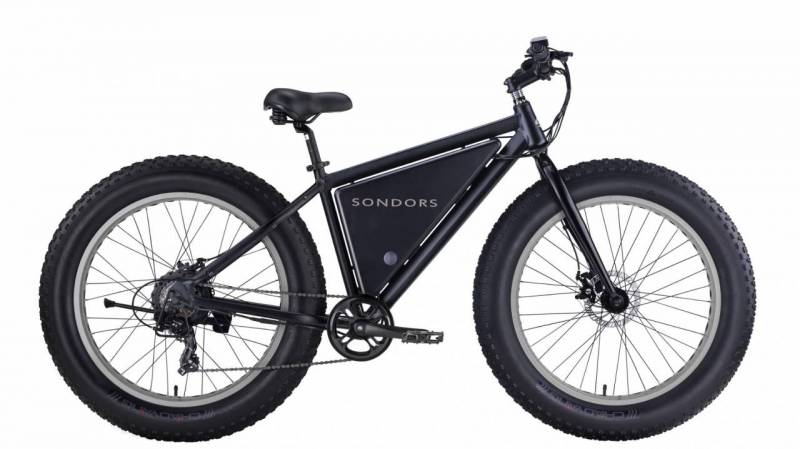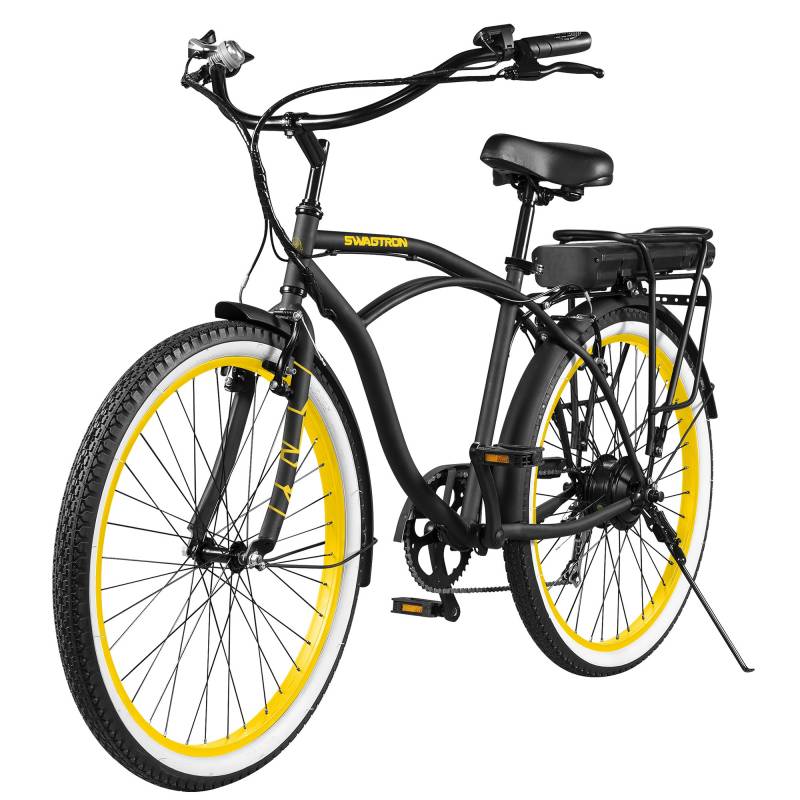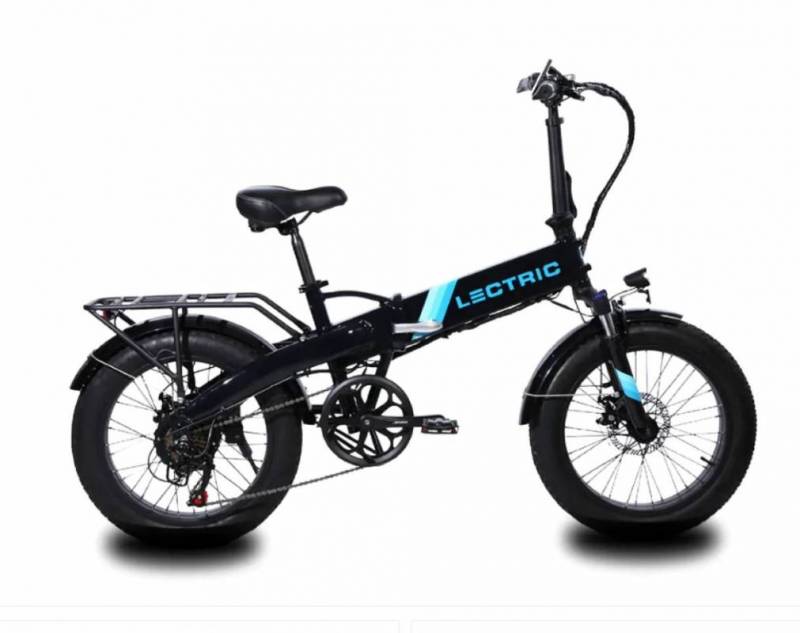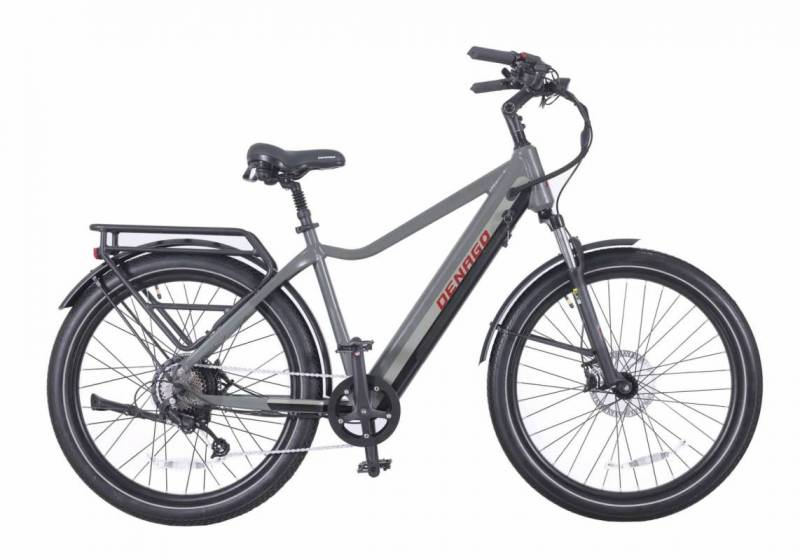Over the last few years, eBikes have exploded in popularity, and over the past year and a half, I’ve become an eBike and electric scooter enthusiast. Judie has been a fan of the electric mobility solution for years; Kev bought her a Sondors Original eBike with fat tires and an extended battery for Christmas 2017 that’s still going strong. I’ve gotten a fairly rapid education on the ins and outs of eBikes in the last few months, and in this post, I want to share some insights into the eBike classification system.

The Sondors X is a Class 1 eBike that is similar to the 2017 Sondors Original that Judie owns.
With gas prices as high as they are and the impact of fossil fuels on the environment making itself clearer and clearer, it’s no wonder electric bikes have become popular. After all, eBikes are an affordable, environmental way to get around town. But, with so many companies entering the market and so many models and styles available, how does one go about deciding which bike is right for you?
One thing to consider is a bike’s “Class.” Since your needs may help determine if you need a Class 1, Class 2, or Class 3 product.
So let’s look at the three classifications of electric bikes and what they mean.
Micromobility transportation, like electric bikes and scooters, has been a bit of a Wild West for the past few years. Different states have different laws to govern them, and then, within each state, the laws often vary from municipality to municipality.
Over the past few years, a growing number of states, my home state of New Jersey included, have settled on a three-tier class distinction to categorize various eBikes. They then apply laws uniformly based on a bike’s “Class.”

The Swagtron EB11 Beach Cruiser is an affordable Class 2 electric bike.
There are still differences from town to town and state to state, so, despite there being some consolidation of policy and perspective when it comes to electric bikes, it still makes sense to check your local laws before hitting the road.
So what are the three “classes” of electric bikes?
Class 1:
Class 1 eBikes can go up to 20 miles per hour and are pedal-assist only.
Pedal-assist means the motor only provides power while you are pedaling. With a Class 1 bike, you can pedal the bike “normally” with pedal assist off. With pedal assist level 1 selected, the motor will offer some help to keep you moving once you start pedaling the bike.
Pedal assist levels will vary from model to model, so pedal assist 1 on one bike may offer far more assistance and hit higher speeds than on another. Each bike will have its own unique power levels, so it is always worth taking time to become familiar with each individual bike and its unique “approach.”
As you move into higher levels of pedal assist, you will get more assistance from the motor and, as a result, hit higher speeds. Some electric bikes have just two or three levels of pedal assist, while others offer up to five different levels. With a Class 1 bike, if you stop pedaling, the motor will cut out. Similarly, when the bike’s sensors detect the bike has hit the legal limit of 20 miles per hour, it will also cut out.

The Lectric XP 2.0 ships as a Class 2 eBike, but in a few seconds, it can be converted into a Class 3 eBike that can hit 28 mph.
Class 2:
Class 2 eBikes are similar to those designated as Class 1. Like a Class 1 bike, they offer pedal assistance of various levels, and regardless of how hard you are pedaling, the motor cuts out when the bike hits the top legal speed of 20 miles an hour.
What differentiates a Class 1 eBike from a Class 2 bike is the addition of a throttle.
A Class 2 eBike’s throttle allows you to use the motor to propel the bike forward without needing to pedal. That means you can pedal when you want some exercise, and you can kick back and go along for the ride when you don’t.
Most Class 2 eBikes let you use the throttle to get the bike moving from a dead stop. This can be especially helpful at busy intersections.
We have, however, encountered a few electric bikes that require you to pedal briefly before allowing you to use the throttle. I assume this is done to keep the bike from jumping forward if you accidentally hit the throttle; while I appreciate the safety concern, I much prefer the ability to use the throttle whenever I choose to use it.

The brand-new Denago Commute1 ships as a Class 3 eBike.
Class 3:
Class 3 eBikes are similar to Class 2 in that they have pedal assist and a throttle. Class 3 bikes, however, have larger, faster motors and can travel up to a legal limit of 28 miles per hour.
The caveat to this, however, is that, in most cases, the bikes will only hit 20 miles per hour if you are only using the throttle. To get to the top speed of 28 miles per hour, the eBikes require you still pedal. It’s not as bad as it sounds since, with many bikes, that simply means moving the pedals around with minimal resistance.
Pedaling with no resistance is referred to as “ghost pedaling,” and it takes time to get used to it.
When Class 3 eBikes hit the top speed of 28 miles per hour, regardless of how they got there, the motor cuts out. So, in effect, a Class 3 bike is simply a faster Class 2; oftentimes, the same bikes can be set as either classification.
So why would someone choose one class of bike over another? Who is each for?
Here’s what I think about it.
Class 1 eBikes are for people who want a fairly traditional biking experience but want or need a little help on hills or longer commutes. They are also great for people who still want the enjoyment and exercise of actually riding a bike but like knowing they have that extra help when they need it.
A Class 1 bike can be especially helpful for people who live in areas with lots of hills since, depending on the bike, they can make an otherwise difficult ascent feel like you’re riding up a gentle slope. Class 1 bikes tend to have smaller motors and lower prices than bikes on other bikes in other classes.
Class 2 eBikes are great for people who like having options. Everything stated above about Class 1 eBikes holds true for Class 2 bikes. The difference is that Class 2 eBikes allow you to propel the bike forward using only the motor, which is great for longer rides and is especially good if you commute to work and would prefer not to arrive dripping with sweat.
I especially appreciate having a throttle when starting an eBike from a dead stop at the bottle of a hill. The throttle gets the bike moving, and then, if I want, I can start pedaling. Class 1 and Class 2 bikes fall into the same legal space as any bicycle. That means you don’t need to register it or get insurance. You can simply order a bike and, when it arrives, start riding.
In short, a Class 2 electric bike is for someone who wants the option to use the throttle but doesn’t want to lose the option of doing their own pedaling.
That, of course, brings us to Class 3 electric bikes.
Class 3 eBikes are where we get back into the Wild West since the range of offerings in this space is huge, and manufacturers are increasingly blurring the lines between electric bikes, mopeds, and motorcycles.
In most states that have adopted the three-tier class system for bikes, a Class 3 eBike must be registered and insured, which is why some consumers prefer to stay away from this space. The good news is that, in most cases, any current driver’s license will do, so you won’t need to get a motorcycle license.
Class 3 eBikes are for people who like everything a Class 2 bike can do and want the option to go a bit faster. Why? Because it is freaking fun!!!
Increasingly, many electric bikes will ship as Class 2 eBikes, but they’ll offer the option to unlock the Class 3 speeds electronically. This way, companies can legally send bikes to people who don’t want to register or pay insurance on them while meeting the needs of people who want more speed … with the same bike.
What I just described is the approach Lectric took with my XP2.0. It arrived as a Class 2, but once I felt comfortable riding it, I was able to use the display and buttons to unlock its Class 3 speeds.
Most states require that the classification be listed on the bike.
A Class 3 electric bike might be considered an electric moped since it offers many of the features found on classic mopeds of the 70s and 80s. But it gets even murkier.

The ONYX RCR looks like a motorcycle and goes incredibly fast, but thanks to the pedals, it is still technically an eBike.
Some newer electric bikes ship as Class 3 bikes, whose top speed is electronically limited to 28 miles per hour. The bikes themselves, however, can go much faster than 28 miles per hour, and some manufacturers offer the ability to “unlock” their bikes so riders can take full advantage of the bike’s power. That means there are Class 3 electric bikes that can actually go 35 miles an hour or more.
A few are SO powerful that they can hit speeds of 50mph or more and have more in common with motorcycles than bikes. In some cases, it is clear the bikes retain their pedals only so that, when they are electronically limited to 28mph, they can still legally be sold as eBikes. One particular model I was looking at tries to do this workaround, but New Jersey has apparently labeled it a motorcycle regardless of the electronic limits.
In short, if you’re looking for a little help on your commute or some hills, a Class 1 eBike is a good and likely affordable option. If you want the option to use the throttle but don’t mind doing some pedaling along the way, a Class 2 eBike is likely a better fit. And if you’re looking for the option to go faster and cruise around, a Class 3 eBike is likely the way to go! Finally, if you really want speed, a Class 3 eBike that can be “unlocked” may be the right choice.
Just remember, the laws governing eBikes are clear that 28mph is the upper limit. Moreover, zooming along at high speeds with minimal protection is something you would never do on a “real” motorcycle, so why take the risk on an eBike that hits similar speeds?
Whatever your needs, there’s an eBike out there that’s right for you. We look forward to increasing our eBike coverage and helping you find the right one for your needs and budget!